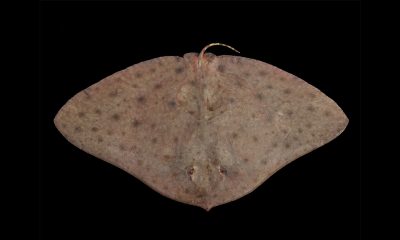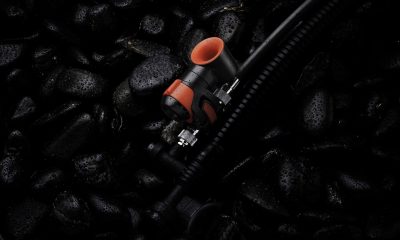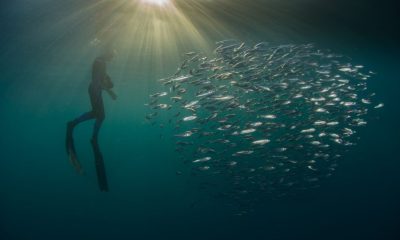News
Space-Age scuba suit enables divers to go deeper

A space-age scuba suit that enables scientists to dive and stay beneath the water’s surface at depths of 1,000 feet or more will have its first test this summer in the ocean off Nantucket.
The suit, known as an Exosuit, is on exhibit until Wednesday at the American Museum of Natural History in Manhattan. Scientists there say it will bring ocean exploration to a new level, going beyond the mini submarines that have been used to explore deep unchartered waters to collect marine life from its natural habitat.
The 530-pound aluminum alloy suit has rotary joints at the hands, elbows and knees and a bubble helmet mask. The suit’s handgrips enables scientists to touch and grab marine life and provides a 50-hour life-support system with communications with a surface vessel.
“For the first time, I will be able to get out into the water and experience marine life and actually touch it,” said John Sparks, 50, a curator at the museum’s ichthyology department. Sparks, who is not a diver but has been training for the excursion, said he is especially excited about the suit’s foot power thrusters that will help maneuver him through the ocean waters.
Scientists this summer will test an Exosuit off the coast of Nantucket where waters plummet 10,000 feet. “This is blue water. There is no bottom,” said Michael Lombardi, 31, the museum’s diving safety officer and marine biologist who will also test the suit.
“We are at a crossroads of diving technology,” said Lombardi. “This is a form fitting space suit. You are in a shell with all this technology that works with you.”
Scientists hope to gather a new jelly fish species with a visible luminescent light they hope to reproduce for medical research in helping to track cell movements in the human body.
Using Exosuit to collect these bioluminescent species in their natural environment will allow scientists to freeze them for research at the lab.
“Our access to these deeper waters [up until now] has restricted our ability to investigate the behavior and flashing patterns,” said Sparks. Before Exosuit, divers could only see them when they emerged in shallow waters, when their luminescence is not as intense.
Now with Exosuit, scientists can study them for several hours watching and documenting their lighting patterns with video and high-definition images, all in their environment, said Sparks.
Ultimately, the suit will give divers the chance to work in some places where no human has gone before. “Underwater exploration gives opportunities to be the first person in that environment and that is a very humbling experience,” Lombardi said.
Source: www.newsday.com
Marine Life & Conservation Blogs
Creature Feature: Butterfly Rays

 In this series, the Shark Trust will be sharing amazing facts about different species of sharks and what you can do to help protect them.
In this series, the Shark Trust will be sharing amazing facts about different species of sharks and what you can do to help protect them.
As we’re currently in butterfly season, this month we decided to concentrate on the Butterfly Rays!
Within the family Gymnuridae, there are two genera and 12 species of Butterfly Ray. These species are morphologically different to lots of other rays because of the width of the disc and pectoral fins – in contrast to many other species of Butterfly Ray, their bodies are much wider than they are long, especially considering their very short tail. This gives them the appearance of gliding or flying across the sand.
Gymnura altavela – Spiny Butterfly Ray
Gymnura australis – Australian Butterfly Ray
Gymnura crebripunctata – Longsnout Butterfly Ray
Gymnura japonica – Japanese Butterfly Ray
Gymnura lessae – Lessa’s Butterfly Ray
Gymnura marmorata – California Butterfly Ray
Gymnura micrura – Smooth Butterfly Ray
Gymnura natalensis – Backwater Butterfly Ray
Gymnura peocilura – Longtail Butterfly Ray
Gymnura sereti – Seret’s Butterfly Ray
Gymnura tentaculata – Tentacled Butterfly Ray
Gymnura zonura – Zonetail Butterfly Ray
Today we’re taking a look at Gymnura altavela, the Spiny Butterfly Ray. Like all Butterfly Rays, the Spiny Butterfly Ray is a demersal species, meaning it spends the majority of its time on the bottom of the seabed. Butterfly Rays are known for their burying behaviour in the sand, a technique they use to camouflage themselves when they are resting during the day. This protects them from predators, in some areas larger sharks. It also aids them in their ambush hunting technique – by hiding themselves under the sand they are able to easily snatch up their dinner – usually crustaceans, molluscs or other small fish – as they swim by unawares. This behaviour can leave tell-tale butterfly-ray shaped imprints in the bottom of the seabed.
Spiny Butterfly Rays can grow up to 260 cm (disc width (wingspan)), although average is around 200 cm. They give birth to live young, and each litter consists of 1-8 pups. This species has also been found to aggregate, likely for mating. One study found that aggregations of primarily females in the coastal regions off Gran Canaria may correlate with the shifting water temperature.
It is estimated that the species has undergone a population reduction of 50-79% over the last 33 years. This is primarily due to fishing pressure – the Spiny Butterfly Ray is targeted and bycaught in both industrial and artisanal fisheries types using a variety of gear types. The species is now Critically Endangered in the Mediterranean and Southwest Atlantic.
Scientific Name: Gymnura altavela
Family: Gymnuridae
Maximum Size: 260 cm (disc width)
Diet: crabs, shrimps, various invertebrates, fishes, small crustaceans, and molluscs.
Distribution: throughout the Atlantic and Mediterranean and Black Seas.
Habitat: muddy and sandy substrates down to 150m.
Conservation status: Critically Endangered in the Mediterranean and Europe, Endangered Globally.
For more great shark information and conservation visit the Shark Trust Website
Banner Image: ©Tomas Willems. Main image: ©Andy Murch
Gear News
DiveAlertPLUS: a Dual Function Surface / Subsurface Signalling Device
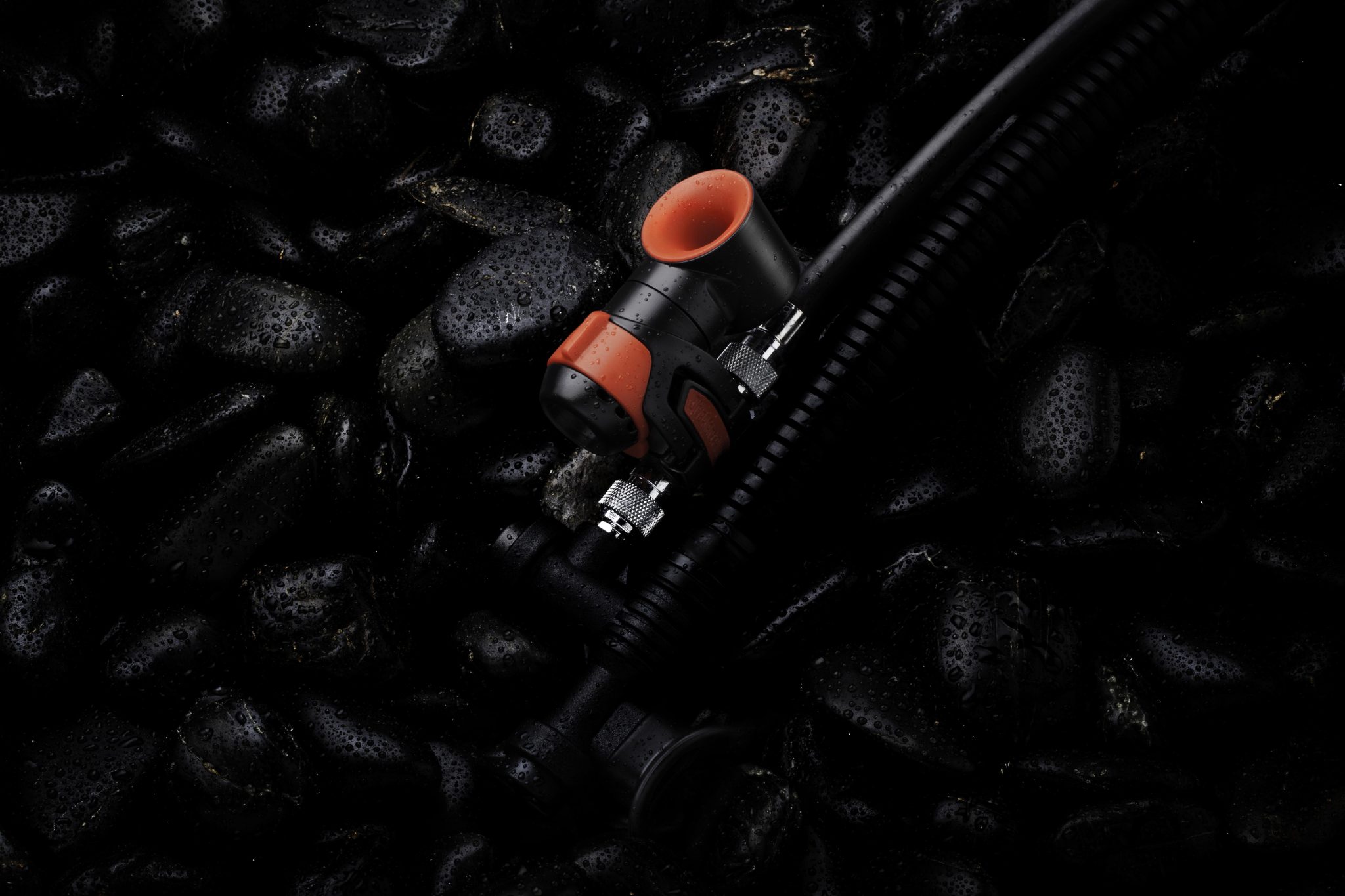
DiveAlertPLUS is a specially designed, small, lightweight pneumatic signalling device that uses quick-connect/disconnect hose couplings to become an integrated part of your power inflator.
It uses a small amount of air from your SCUBA tank to make a piercingly loud sound in air or water. It can be heard a mile away from where the diver in need is above water.
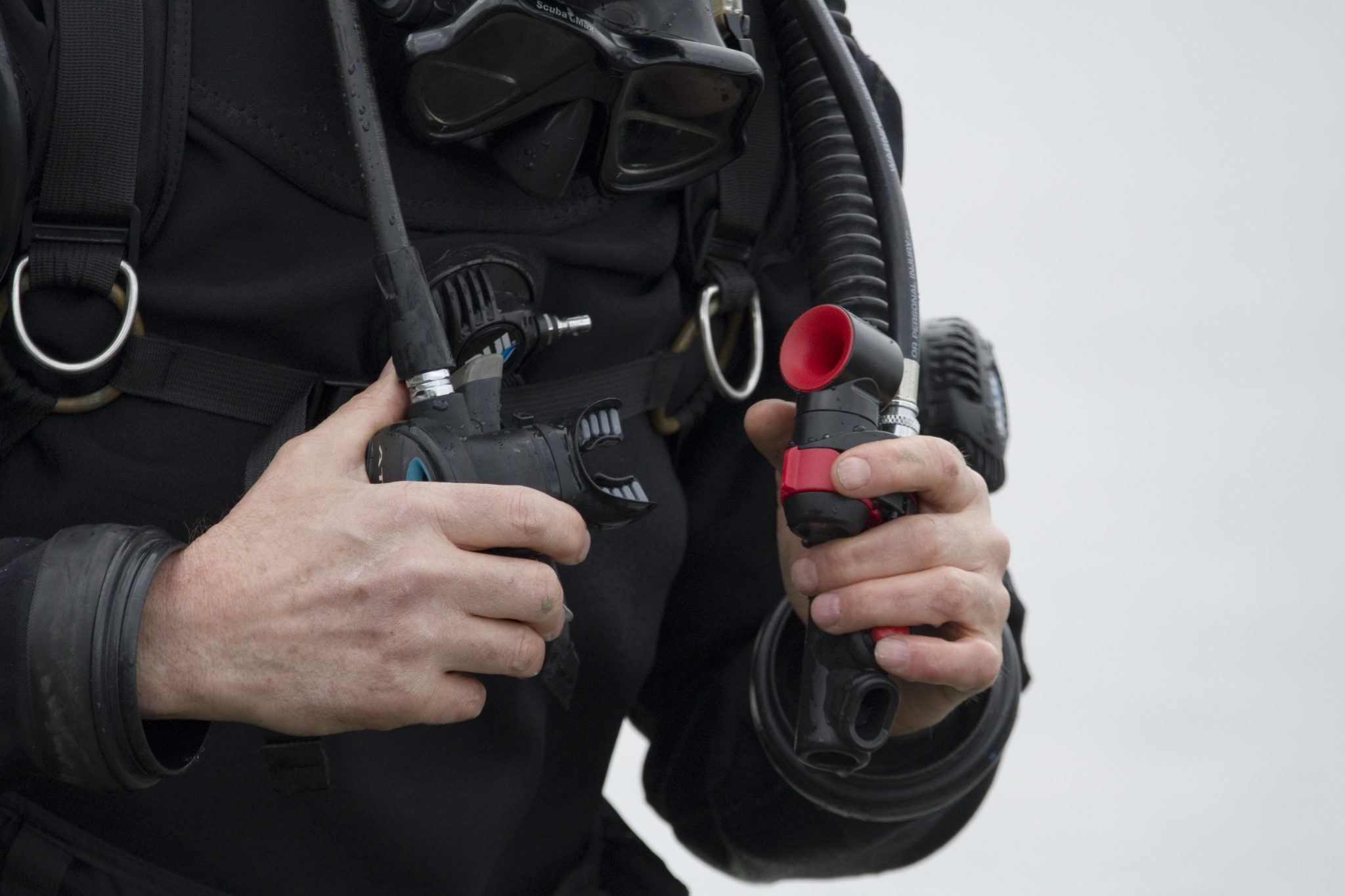
How it works
The DiveAlertPLUS uses chrome-plated brass couplings to attach to your power inflator. Squeezing the device engages the actuator valve stem causing a small amount of air to flutter a stainless steel diaphragm emitting a piercingly loud sound. The subsurface/underwater signal is produced by a percussion “buzzing” noise made by a piston hitting a stainless steel diaphragm much like a drum.
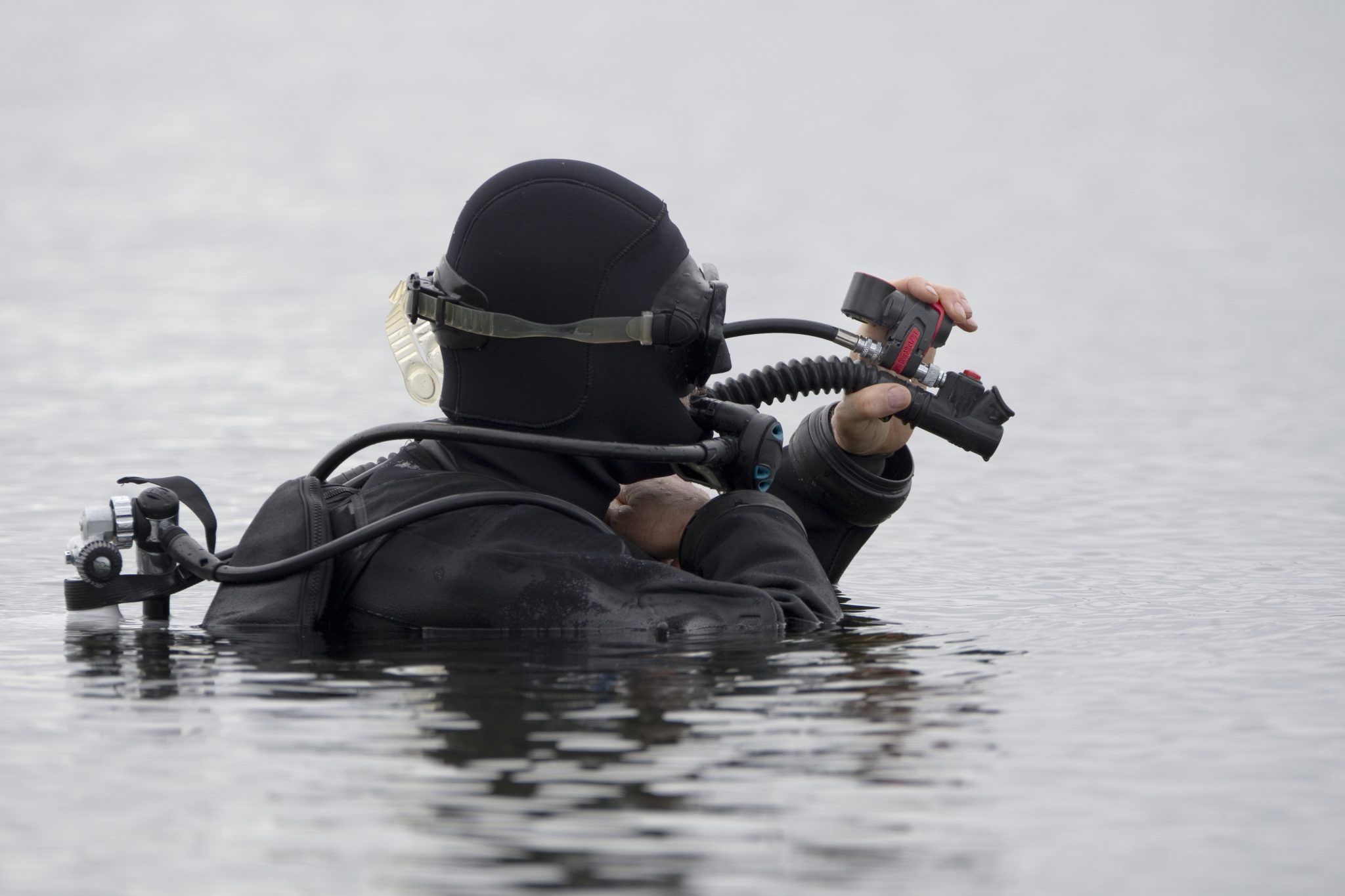
To Learn more about the DV1 an DV3 DiveAlert click on this link to their website: https://www.divealert.com/index.php/divealert-plus
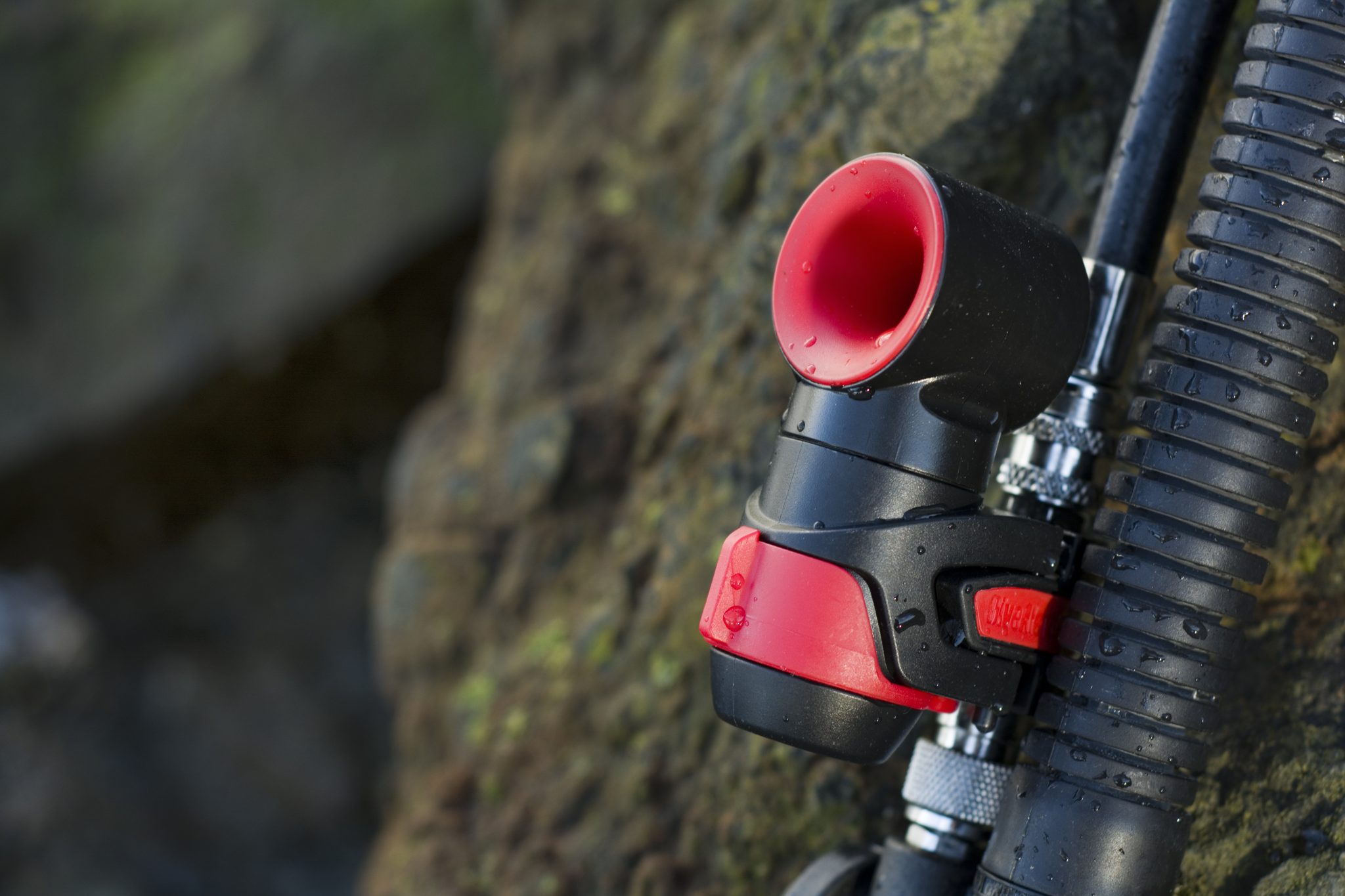
Sea & Sea is the home of DiveAlert and other leading diving brands in the UK.
-

 Blogs4 weeks ago
Blogs4 weeks agoDive Indonesia Part 3: Dive into Lembeh Trip Report
-

 Gear Reviews1 month ago
Gear Reviews1 month agoGEAR REVIEW – Revolutionising Diving Comfort: The Sharkskin T2 Chillproof Suit
-

 News3 months ago
News3 months agoPADI Teams Up with Wellness Brand Neuro to Drive Ocean Change and Create a Blue State of Mind
-

 Blogs2 months ago
Blogs2 months agoMurex Resorts: Passport to Paradise!
-

 Blogs3 months ago
Blogs3 months agoDiver Discovering Whale Skeletons Beneath Ice Judged World’s Best Underwater Photograph
-

 Blogs2 months ago
Blogs2 months agoSeagrass Awareness Month brings critical food source for Manatees to centre stage
-

 Marine Life & Conservation3 months ago
Marine Life & Conservation3 months agoSave the Manatee Club launches brand new webcams at Silver Springs State Park, Florida
-

 Blogs2 months ago
Blogs2 months agoSOMABAY: Scubaverse interviews Wolfgang Clausen, General Manager, ORCA Dive Clubs



